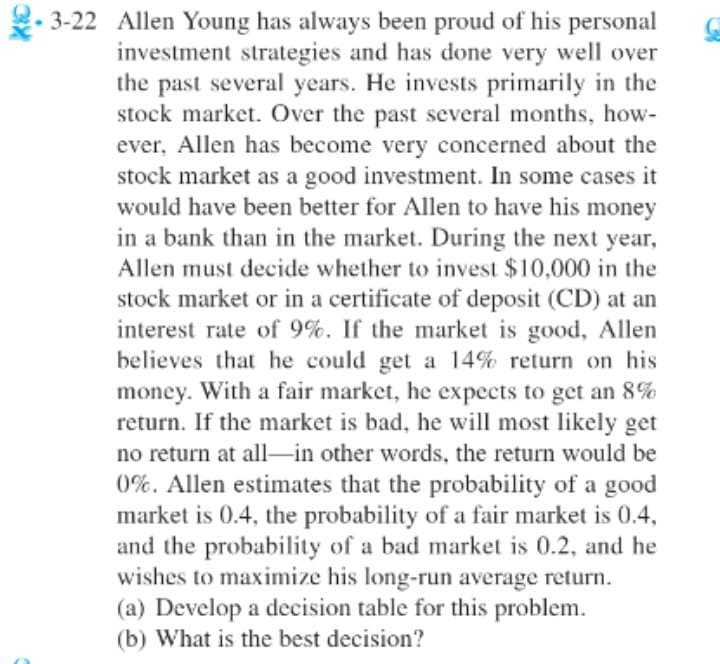Allen Young has always been proud of his personal investment strategies and has done very well over the past several years. He invests primarily in the stock market. Over the past several months, how ever, Allen has become very concerned about the stock market as a good investment. In some cases it would have been better for Allen to have his money in a bank than in the market. During the next year, Allen must decide whether to invest $ 10,000 in the stock market or in a certificate of deposit (CD) at an interest rate of 9%. If the market is good, Allen believes that he could get a 14% return on his money. With a fair market, he expects to get an 8% return. If the market is bad, he will most likely get no return at all - in other words, the return would be 0%. Allen estimates that the probability of a good market is 0.4, the probability of a fair market is 0.4, and the probability of a bad market is 0.2, and he wishes to maximize his long - run average return. (a) Develop a decision table for this problem. (b) What is the best decision?
Allen Young has always been proud of his personal investment strategies and has done very well over the past several years. He invests primarily in the stock market. Over the past several months, how ever, Allen has become very concerned about the stock market as a good investment. In some cases it would have been better for Allen to have his money in a bank than in the market. During the next year, Allen must decide whether to invest $ 10,000 in the stock market or in a certificate of deposit (CD) at an interest rate of 9%. If the market is good, Allen believes that he could get a 14% return on his money. With a fair market, he expects to get an 8% return. If the market is bad, he will most likely get no return at all - in other words, the return would be 0%. Allen estimates that the probability of a good market is 0.4, the probability of a fair market is 0.4, and the probability of a bad market is 0.2, and he wishes to maximize his long - run average return. (a) Develop a decision table for this problem. (b) What is the best decision?

Trending now
This is a popular solution!
Step by step
Solved in 2 steps


